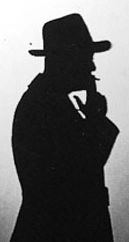Inside the Toolbox: Umar Nurmagomedov
The Young Eagle Takes Flight
Umar Nurmagomedov
The Young Eagle Takes Flight
Hailing from the mountains of Dagestan, Umar Nurmagomedov follows in his illustrious cousin’s footsteps, but aims to emerge out of his shadow. Whereas Khabib Nurmagomedov solidified himself as a divisional great, and P4P all-timer depending on who you ask, through clinical offensive grappling, Umar styles himself as a threat in every facet of the fight. Perhaps picking up on criticisms of his cousin, or perhaps feeling more confident from a childhood of Muay Thai training; Eagles MMA and AKA product Umar Nurmagomedov has no qualms with striking on the feet. Today, we’ll be taking a look at The Young Eagle, and reviewing his burgeoning UFC career.
While Khabib’s striking served primarily to facilitate the takedown, his obvious gameplan often afforded him opportunities for heavy strikes on would-be sprawling opponents. With Umar, however, his game is slightly more nuanced. Rather than a binary striking/grappling approach, as Khabib’s could be summed up, Umar prefers to layer his respective offenses a bit deeper. Though his skills, while generally more diverse than the original Eagle’s, are largely less refined. Against Sergey Morozov, for instance, in his UFC debut, Nurmagomedov showed off blindingly fast takedown entries and sneaky high kicks, however the much lauded control of Khabib was very obviously missing. That isn’t to say that Umar is bad at controlling his opponents, but that the level of positional domination held by his cousin is second-to-none.
Tools of the Trade: Kicking
Umar is far more comfortable in exchanges than other Dagestani exports. Fighting out of the southpaw stance, he’s largely able to mitigate opponents’ jabs with hand checking and a limited arsenal of feints, but the beauty of his striking is the high kick. Often opting for a step-up lead leg high kick, or a step-through high kick where the lead leg becomes the rear leg, Nurmagomedov throws them out like dollar bills at the strip club. This serves two purposes, namely a kick to the head can be a fight ending shot, and secondarily it serves as a means to keep the opponent’s guard occupied and their stance straight up and rigid. In order to avoid the primary aim of the high kick, an opponent has to resort to blocking it, but the idea of blocking high kicks is sort of a misrepresentation; a heavy kick to the guard must be absorbed, more so than traditionally “blocked”. Meaning, an opponent who can’t avoid the kick is forced to brace for it; in this heavy, high bracing posture, their hips are perfectly presented for takedown opportunities. Equally on the backfoot, Nurmagomedov is able to utilize slips and near misses as reactive takedown entries. The speed at which he changes levels and enters onto takedowns illuminates his lifetime of wrestling training, the dexterity of his shots rival those of his cousin as well.
The above gif demonstrates this principle. In the selected clips Umar shows off a variety of kicks; a step-up high kick, followed by a rear high kick after switching stances, and finally a rear leg front kick. The next section shows Nurmagomedov feinting the front kick, and, anticipating a right hand counter, he cleverly slips under and deep onto a double leg takedown. Then, in the final portion, Nurmagomedov flashes another step-up headkick that stuns Morozov, notice the commitment to fundamentals however, immediately after the kick Nurmagomedov slips and pivots out to a superior angle.
Here, again more of the same fundamental principles are at play. Pay careful attention to the stance of Maness here: with each kick his posture is forced into a static rigidity that plays perfectly into the hands of the takedown artist. Nurmagomedov doesn’t simply throw these kicks because they look cool, they do, but they also serve the purpose of both compromising an opponent’s base and fatiguing their decision-making systems. In the above clip, Maness is unsure whether or not a kick is coming and his posture is way too high to defend the single leg Nurmagomedov dives on. In recognition of this and coupled with Maness attempting an elbow, his base is nowhere near where it would need to be to even begin to defend the takedown.
The kicking arsenal of Nurmagomedov is without a doubt his signature element, however his boxing game is relatively nonexistent. As will be expanded upon later, a kick-heavy approach with very few tools in boxing range can be dangerous and risky at the highest levels. Recently, however, against Raoni Barcelos, likely the toughest opponent to date for the Dagestani, The Young Eagle showed a more developed jab and a decent lead hook. In combination with his distance kicking game, these weapons proved very useful and a much needed wrinkle to his game. Finishing the previously unfinished Barcelos with a step-in knee and lead hook combination.
While Joe Rogan’s appraisal as “one of the most dynamic kickers in the sport” may be a bit hyperbolic, Nurmagomedov is most certainly one of the more prolific and dexterous kickers at present. Building off of his kicking game is the wrestling offense; the primary aim. As has already been mentioned, his takedown entries are often exceedingly fast and crafty, his “drive”, or ability to push through on takedown attempts, however, is not nearly as elite as his fellow Dagestanis. Again, not to say that his offensive wrestling is bad, quite the opposite, but perhaps not nearly as refined as others. Regardless, his takedowns are without a doubt high quality and his arsenal of takedown entries and finishes are quite impressive.
Tools of the Trade: Wrestling
Offensive wrestling in MMA can be categorized into two sub-skills: Open Space and Cage Wrestling. While the art of grappling is obviously much deeper and more nuanced than those two categories, for simplicity’s sake we’ll be analyzing them under these broad strokes. The following clip displays Umar’s open space wrestling offense:
While there is obviously a lot in this clip, we can see some of the points that have already been touched upon. The reactive takedowns, the threat of the kick as it pertains to the wrestling entries, and, at a few points, the lack of drive. Much like Khabib, and other Abdulmanap Nurmagomedov trained fighters, Umar is particularly crafty at intermingling traditional wrestling shots with trips, and chaining different shots together. Here we’ll examine the first trip, notice the exchange starts with an under/over grip and Umar is utilizing head pressure to disrupt Maness’s balance – forcing his weight onto the right foot, Nurmagomedov’s own right leg swims inside, behind Maness’s now lighter left leg and sweeps it out from under him.
Pay critical attention to Nurmagomedov’s left foot, once he has the right leg deep and in tripping position, he pushes off with his left and makes sure to keep it in an optimal posting position throughout the trip and once on the ground as well. Open space takedowns and trips are often easier to defend, thus Abdulmanap’s system of cage wrestling and control, but a crucial development of Umar’s game is the heavy kicking offense as a means of disguising the open space takedowns. This approach provides for more opportunities for open shots and clinch engagements as a method for securing trips, an element that Khabib’s game largely lacked.
Abdulmanap Nurmagomedov’s cage wrestling meta has been pretty well decoded by many other analysts, so we won’t get too in depth in its coverage here, but we’ll examine some of Umar’s fence wrestling against Brian Kelleher to further exemplify the style.
The key elements of fence wrestling are underhooks, wedges (in the form of the lead leg pressed deep in-between the opponent’s legs), and driving pressure to constantly wear on an opponent and systematically break their base. While Khabib and Islam Makhachev are masters of these, Umar is not nearly as adept. But when used in combination with his open space shots through crafty chain wrestling, his offensive wrestling is incredibly formidable.
While the initial takedown is well defended with a post and a strong whizzer, Nurmagomedov is able to drive Kelleher to the cage. Once Kelleher’s defensive movement is stifled by the cage and he’s smothered by Nurmagomedov, the Dagestani cleverly clears the right side underhook of Kelleher and drops onto a modified double leg. From there he takes care to pull the basing foot back and inwards towards Kelleher’s hips, effectively taking it out of play as an option to stand back up. Giving up his back, Kelleher is in an unenviable position, Nurmagomedov laces the leg for a leg ride before quickly locking up the choke. While Khabib’s game was easily described in a word: Smesh; Umar’s is instead the blending of multiple elements. Layering the kicks into the offensive wrestling, and blending the open space shots with the cage wrestling, all capped off with the grappling and submission acumen.
Takeaways: The Good, The Bad, and the Ugh-ly
While it’s a layered bag of tricks, Nurmagomedov’s game isn’t without its weaknesses. As was alluded to earlier, the prospect of a kick heavy game without much in the way of boxing ability is an inherently risky game. Climbing the rankings and riding an immaculate legacy, the strength of opposition will surely increase. With that, the likelihood of opponents exploiting these mid-range weaknesses concurrently increases. Despite the blistering speed and dexterity of his kicks, Umar remains defensively porous; even the best kickers can be caught on one leg as it’s the base risk of kicking. And with a relatively underdeveloped game within boxing range, the prospects of being pressured and countered pose significant issues for The Young Eagle. His striking defense is primarily predicated on fleet footwork and high level distance management, however if, and when those defenses fail, his hands typically stay low and his guard is anything but reliable.
While not all of the shots thrown at Nurmagomedov in the above clip are landing, they’re dangerously close. Most notably though, is his general lack of defense to the majority of them, aside from a lean back. Considering the opposition faced so far, and the quality of the top of the bantamweight division; the striking defense of the younger Nurmagomedov isn’t exactly promising. Again, this issue is entirely based on the lack of boxing range ability.
The Good: Nurmagomedov’s dexterity and layered game are a unique threat and a welcome departure from the typical Dagestani meta. His combination of skills is smart and effective, and the recent improvement of his lead hand weapons are certainly promising for his development as a well-rounded martial artist.
The Bad: Obviously the striking defense, we’ve already written two paragraphs about it so we won’t invest any more effort into hating, but the striking defense and awareness most definitely need work.
The Ugh-ly: The hands, man, the hands. He’s shown moments of brilliance behind his jab and capitalizing on small windows for the lead hook, but they’re so rudimentary and underutilized that it becomes such a glaring issue. Should he develop his hands, as coach Javier Mendez might be able to do, Umar could prove to be a top fighter in the stacked bantamweight division, but until then… he’ll leave much to be desired.
Who’s next for The Young Eagle? Ricky Simon, Pedro Munhoz, or someone else?
Will Umar become a champion? Who does he beat in the Top 10?
Will he stay undefeated and retire young?
Give me your takes!



